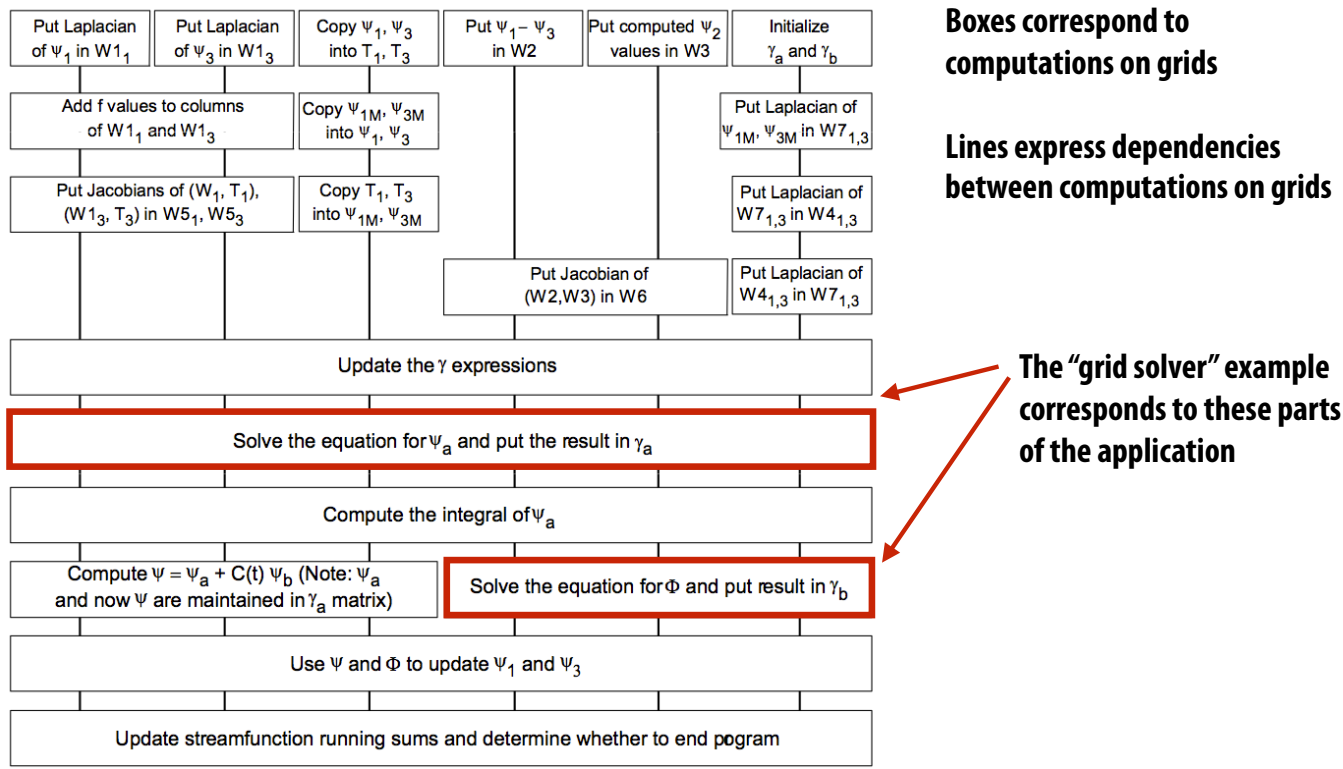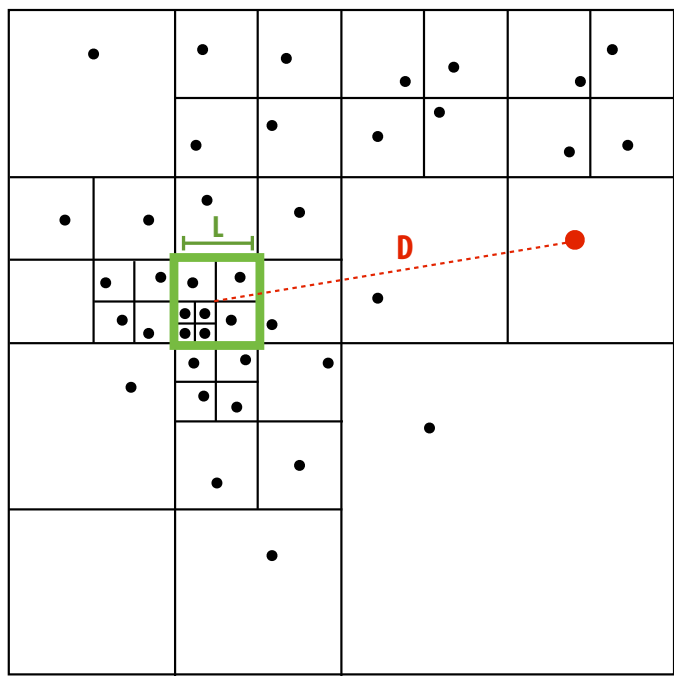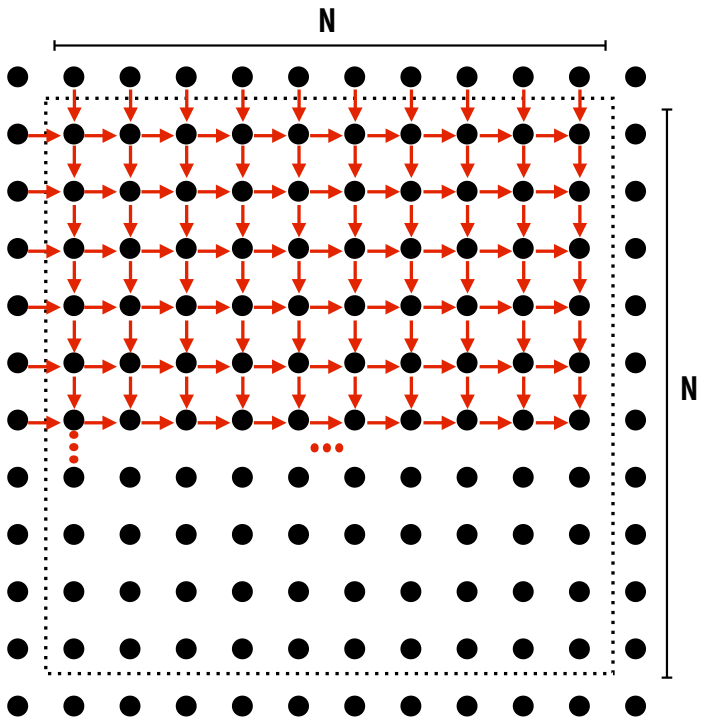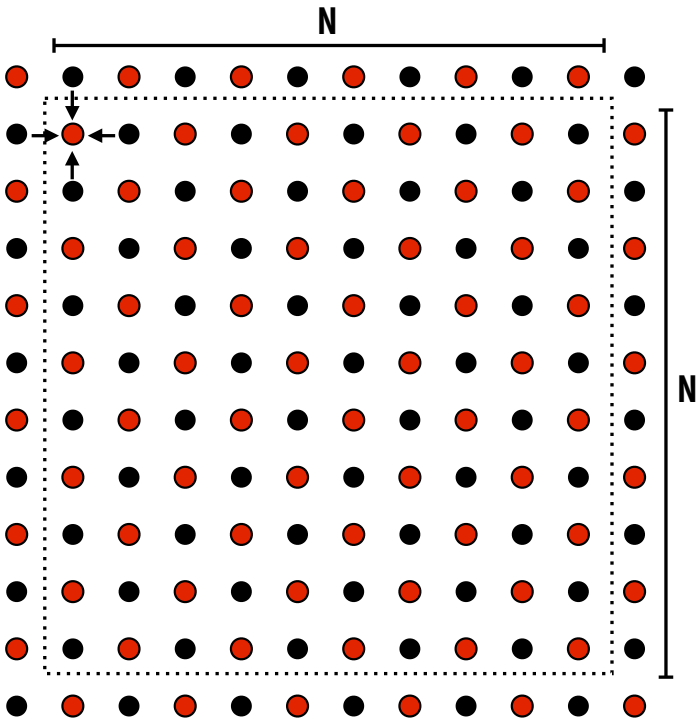Lecture 4: Parallel Programming Basics 📚¶
约 298 个字 25 行代码 4 张图片 预计阅读时间 2 分钟 共被读过 次
Parallel Programming Models 🖥️¶
1. Shared Address Space¶
- Communication: Implicit via loads/stores (unstructured).
- Pros: Natural programming model.
- Cons: Risk of poor performance due to unstructured communication.
- Example:
2. Message Passing¶
- Communication: Explicit via send/receive.
- Pros: Structured communication aids scalability.
- Cons: Harder to implement initially.
- Example:
3. Data Parallel¶
- Structure: Map operations over collections (e.g., arrays).
- Limitation: Restricted inter-iteration communication.
- Modern Use: CUDA/OpenCL allow limited shared-memory sync.
Hybrid Models 🌐¶
- Shared memory within a node + message passing between nodes.
- Example: MPI + OpenMP.
Example Applications 🌊¶
Ocean Current Simulation¶
- Grid-based 3D discretization:
- Dependencies within a single time step:

- Exploit data parallelism within grids.
Galaxy Evolution (Barnes-Hut Algorithm) 🌌¶
- N-body problem with \(O(N \log N)\) complexity.
- Quad-tree spatial decomposition:

- Approximate far-field forces using aggregate mass in tree nodes.
Creating a Parallel Program 🛠️¶
Key Steps:¶
- Decomposition: Break into parallel tasks.
- Assignment: Map tasks to workers (threads/cores).
- Orchestration: Manage sync, communication, and data locality.
Amdahl's Law ⚖️¶
- Formula:
\(\(\text{Speedup} \leq \frac{1}{S + \frac{(1-S)}{P}}\)\) - \(S\): Fraction of serial work.
- Example:
- Step 1 (parallel): \(N^2/P\) time.
- Step 2 (serial): \(N^2\) time.
- Speedup \(\leq 2\) for \(P\) processors if Step 2 remains serial.
Case Study: 2D Grid Solver 🔢¶
Gauss-Seidel Iteration¶
- Sequential Code:
Parallelization Challenges ⚠️¶
Synchronization Primitives 🔒¶
1. Locks¶
- Usage:
2. Barriers¶
- Usage:
3. Message Passing¶
- Deadlock Avoidance:
Assignment Strategies 📋¶
Static vs. Dynamic¶
- Blocked Assignment:
- Thread 1: Rows 1–100; Thread 2: Rows 101–200.
- Interleaved Assignment:
- Thread 1: Rows 1, 3, 5...; Thread 2: Rows 2, 4, 6...
Performance Trade-offs¶
- Blocked: Better locality, less communication.
- Interleaved: Better load balance for irregular workloads.
Summary 📌¶
- Amdahl's Law limits speedup based on serial fractions.
- Decomposition is key to exposing parallelism.
- Hybrid Models (shared memory + message passing) dominate practice.
- Synchronization must balance correctness and overhead.
🚀 Next Lecture: CUDA/OpenCL for GPU parallelism!

